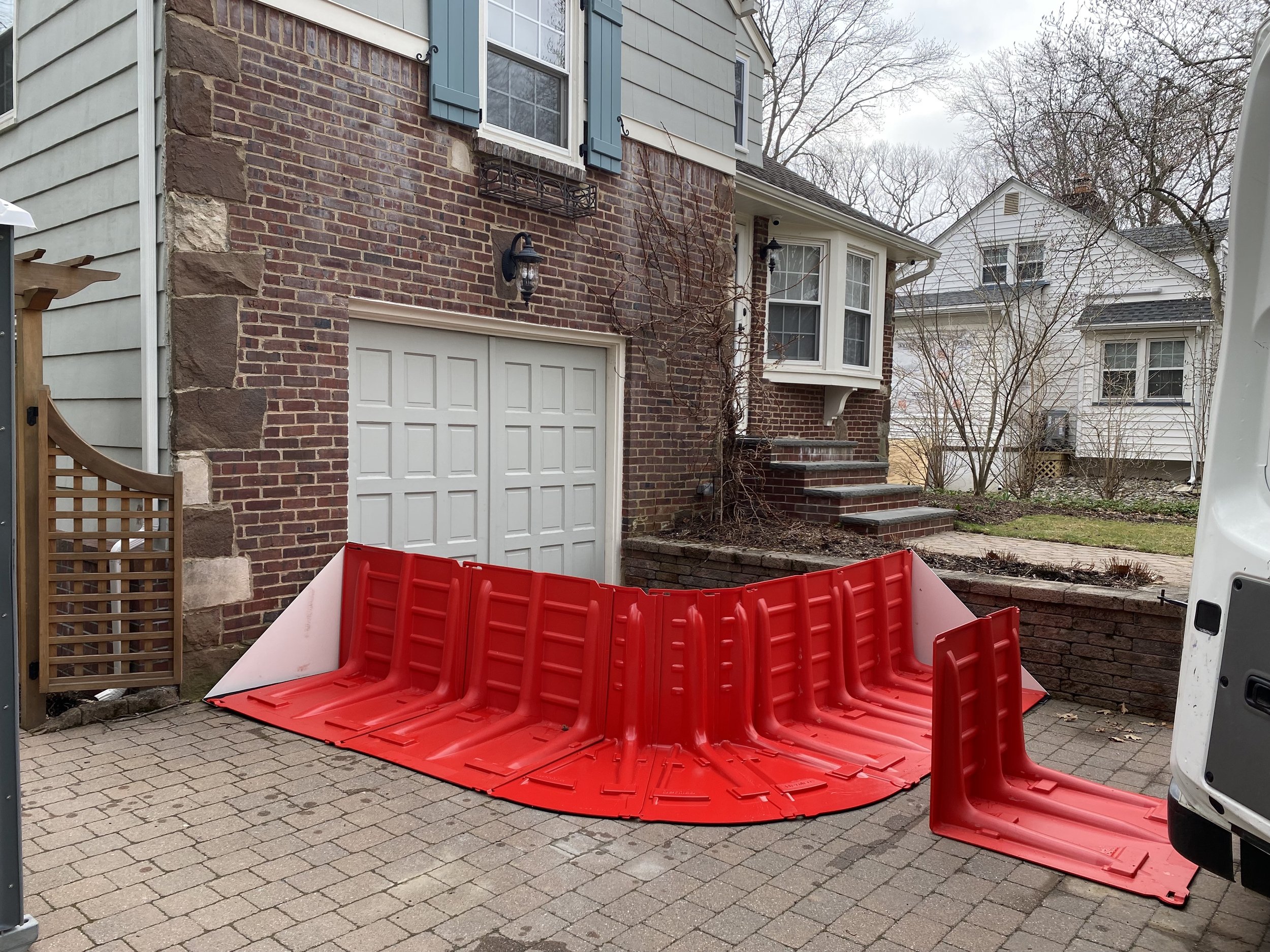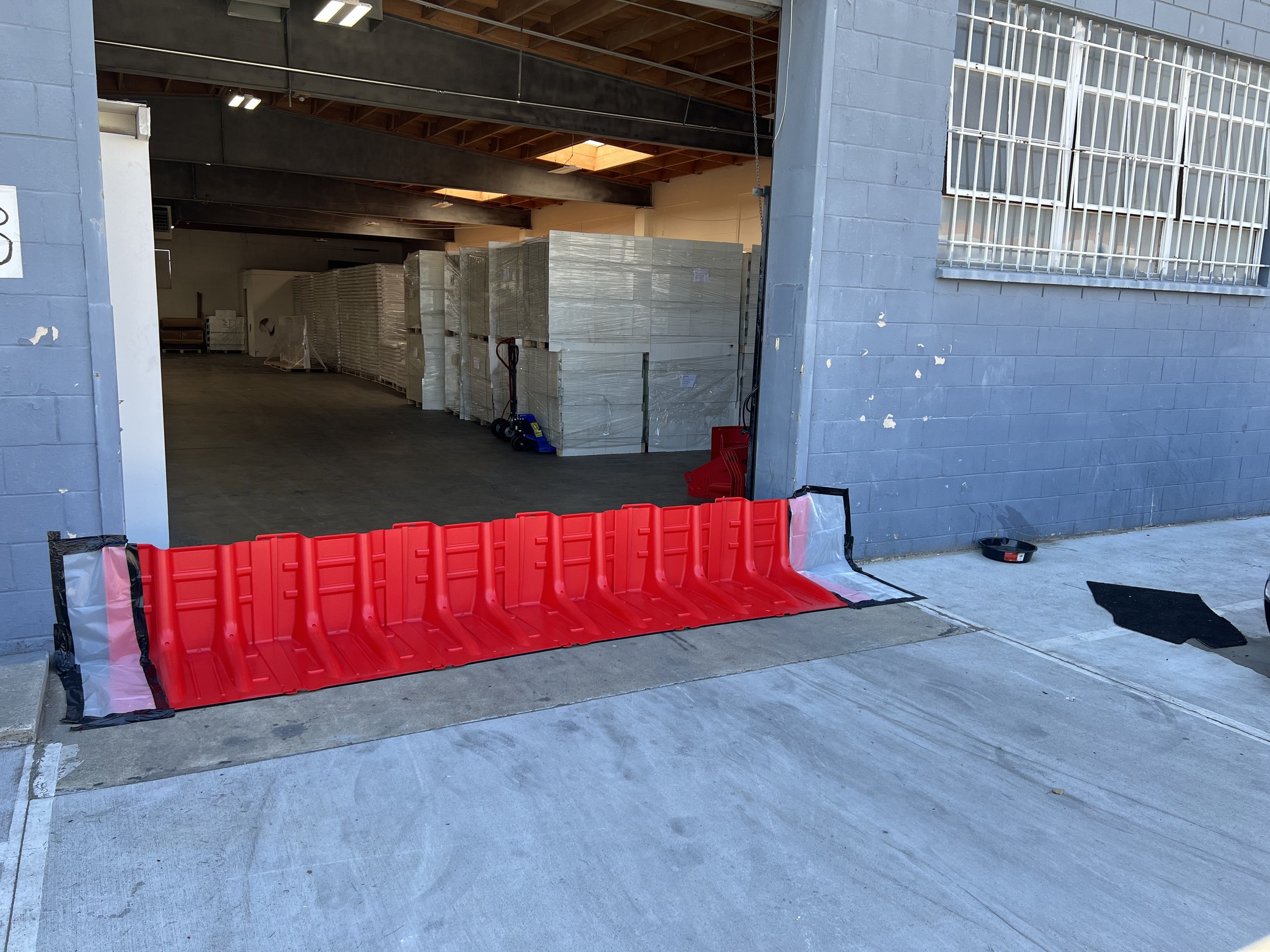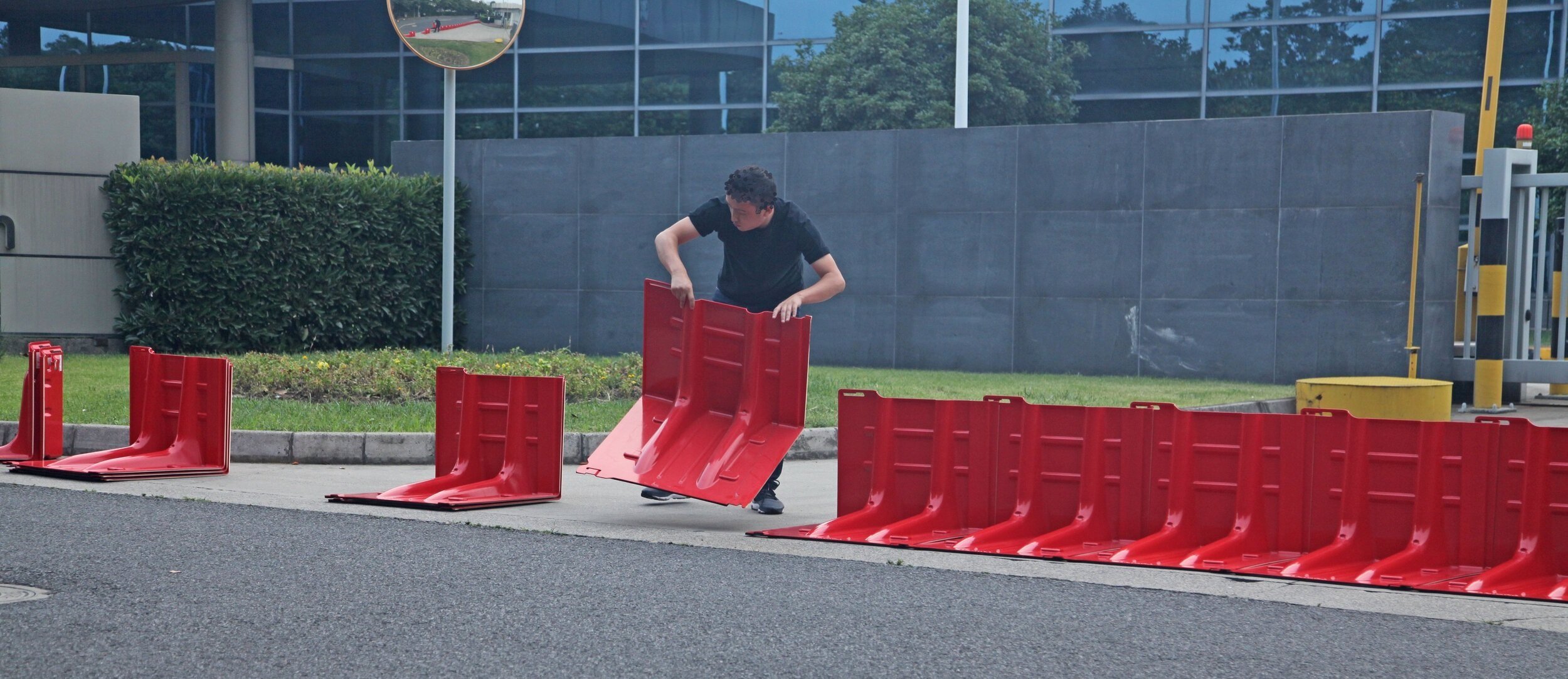
Installation Instructions.
Staging Mayim Barriers.
We recommend transporting Mayim flood barriers from storage stacked on a dolly. This allows for quick staging of material on site, with placement and connection later. Each barrier is lightweight, meaning a single person can transport several barriers in a stack if no dolly is available.
Positioning Barriers.
Remove individual Mayim flood barriers from the staging stack and position adjacent to the run of already installed barriers. Be sure that you are always connecting left to right, when standing behind the barriers and with the “L” shape of the barrier facing outwards. This allows barriers to overlap the prior barrier, to notch into the connection hole, and to create a seal.
Connecting Sections.
When standing behind Mayim barriers, each barrier has a female receiver at the bottom right of the barrier and a male connecting tab on the bottom left. Each barrier also has a female receiver at the top right and a male connecting tab on the top left
To connect panels, simply tip the newest barrier at an angle and insert the bottom male connecting tab into the female receiver. Set the panel down and press the male connecting tab into the female receiver (see below image of connected sections).
The Mayim Connection System Components.
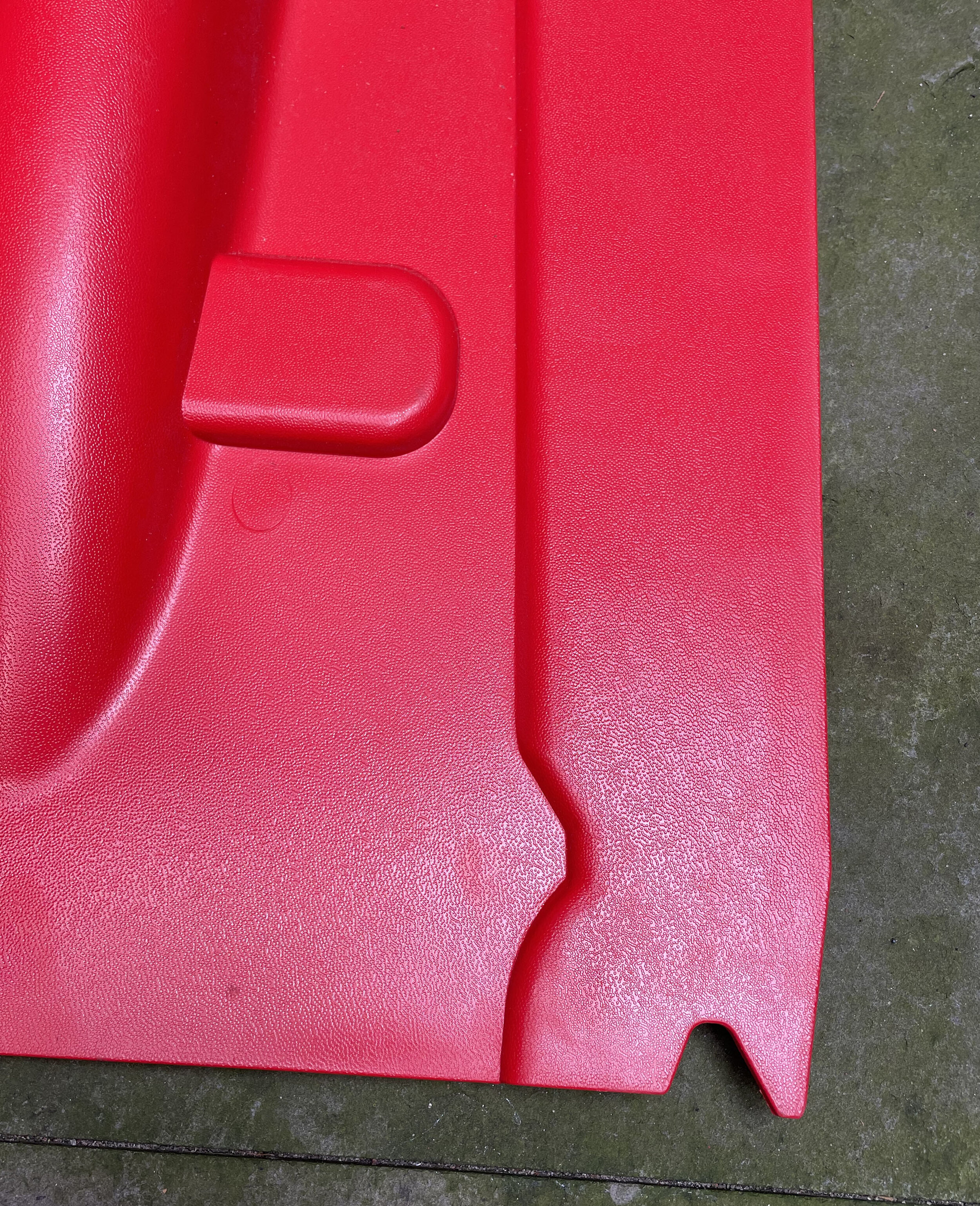
Bottom Male Connector Tab
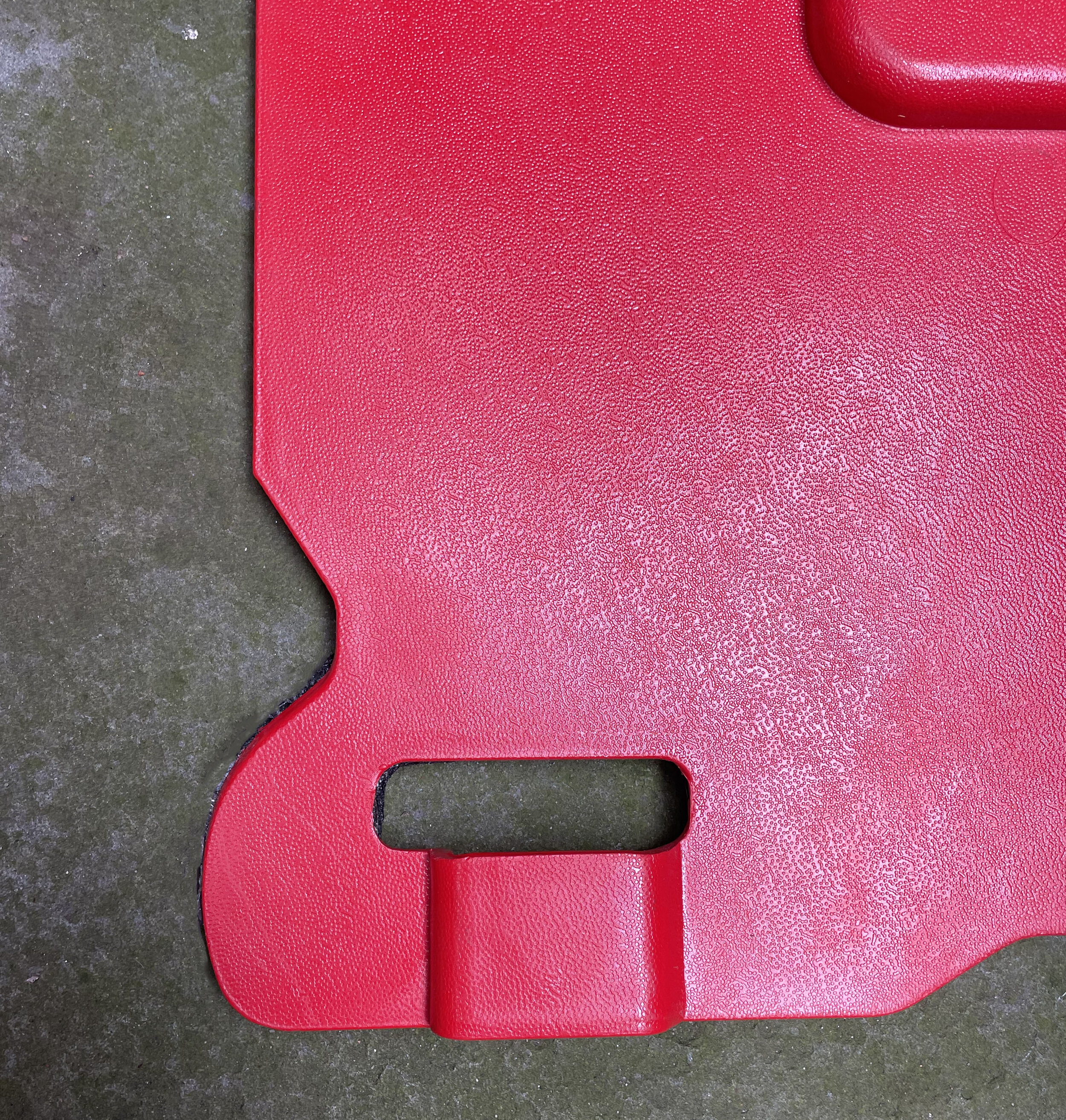
Bottom Female Receiver
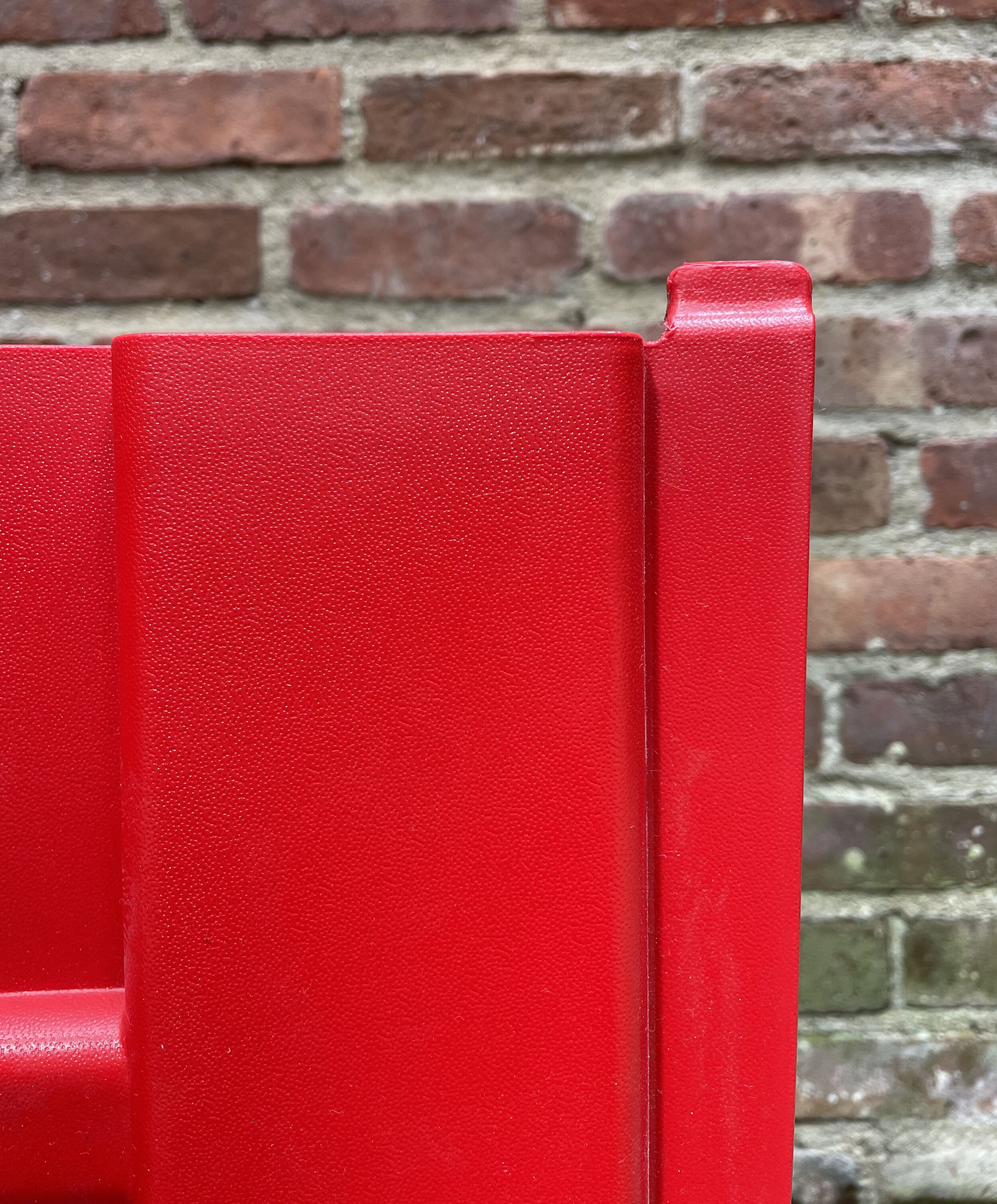
Top Male Connection Tab
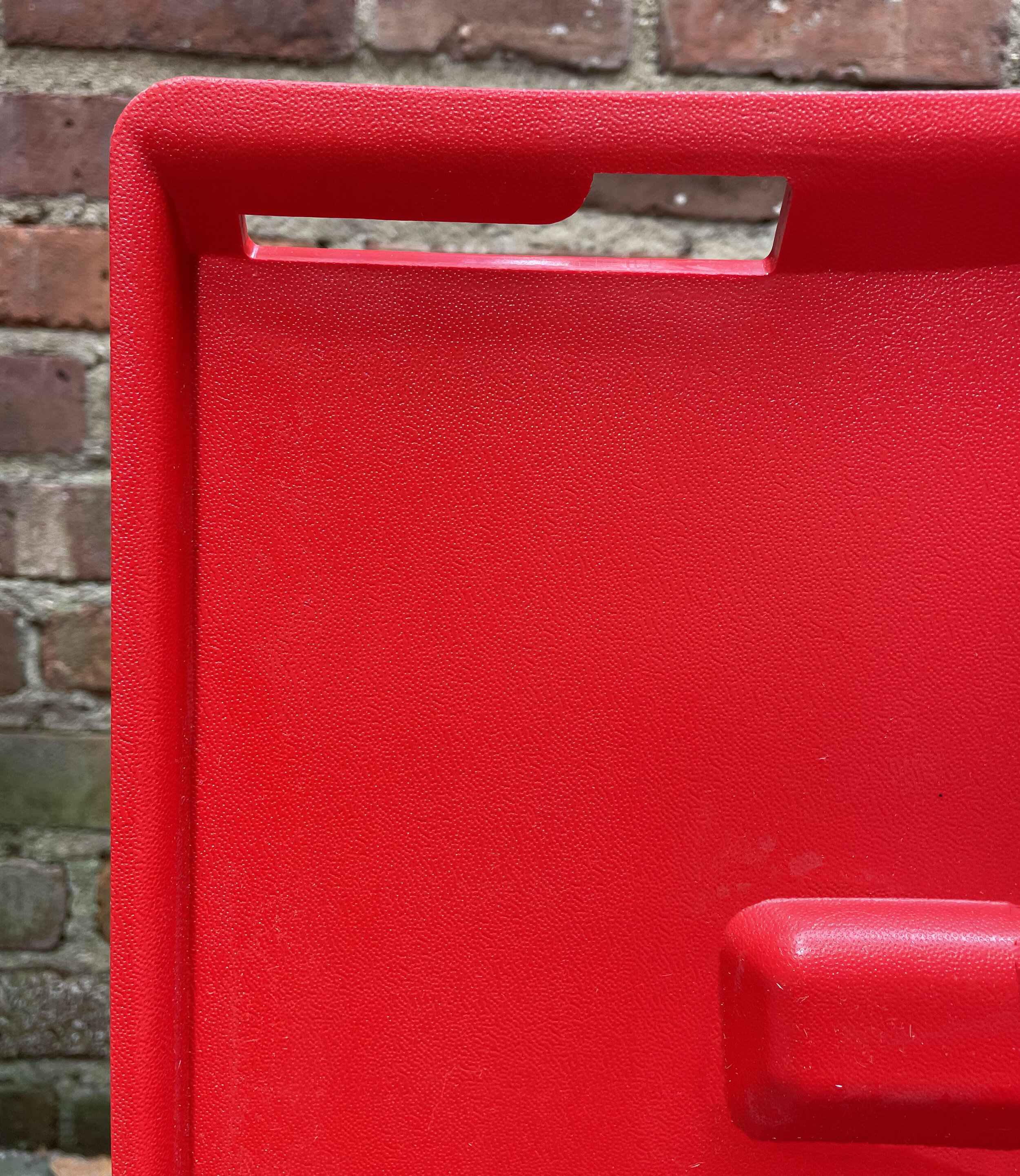
Top Female Receiver
Locking Sections.
Once you have inserted the bottom male connecting tab into the female receiver, position and set down the barrier being installed, such that the top male connecting tab is positioned just outside the widest portion of the top female receiver (this is located on one side of the receiver). Press down on the male connecting tab to insert it into the female receiver.
Adjusting Angles.
Angles can be adjusted 3 degrees in either direction, utilizing the “play” in the connection system. This allows for gradual adjustment in the direction of a run of barriers to follow gradual shifts in the layout of the flood barriers. For larger turns or to go around corners, utilize the Inward Curve (IC) and Outward Curve (OC) Mayim pieces.
Adding Turns.
While you can adust Straight Mayim™ section about 3 degrees in either direction, larger turns require use of our MB1/MB2-IC and OC sections. These are curved sections, each 33 degrees, that provide an outward or inward curve, depending on your needs. Connect 3 curves to create a 90 degree angle. Outward and Inward curved sections connect to each other and to straight panels the same way as standard Mayim panels. Use turns to curve around a building perimeter, to turn a straight run towards a fixed wall for seal off or to create a complete pool for containing water.
Adding Gable Ends.
Gable End Pieces (GEL/GER) are designed to abut against a fixed wall, to terminate a run of barriers. Gable Ends are connected to Mayim Barriers, using the same connection system. Once connected to the last barrier in a run, shift the barriers (using the Adjusting Angles feature) so that the Gable End Piece is pressed firmly against the fixed wall, creating a seal between the barrier and the wall. You may wish to add a weighted Sandbag to the end section for additional support and to prevent any leaking because of a loose seal with the fixed wall. You can add Gable End pieces to the end of an Outward Curve (OC) or Inward Curve (IC) section, should these sections be useful to help align a Mayim Barrier to the fixed wall.
Alternate Methods of Sealing Off To Walls
Adding Neoprene Strips For Seal Off.
Depending on the scenario, it is possible to add closed cell neoprene strips to the backside of Mayim barriers to enable a good seal against walls, including walls with variation, such as brick or cinder block walls.
We recommend 1.5” wide x 1” thick, peel and stick rolls, which can be purchased HERE.
Cut strips to size and adhere to the back of Mayim barriers.
Align panels against the wall, frame or surface either directly or at an angle, as needed. Press against wall to ensure a good seal. Trim as needed and add sections of neoprene as needed to plug holes or gaps between the barriers and the wall. We recommend placing a sandbag or Minnow bag against the panel to create additional pressure against the wall, until water levels rise and create hydrostatic pressure.
Leave strips on sections for further use.
Sealing Off At Fixed Walls Using Poly Sheeting.
If you are limited on space or your budget doesn’t allow the purchase of Outward Curved sections and End Gables, you can use standard poly-sheeting and duct tape to create a seal between panels and and adjacent wall. Remember that rising water exerts tremendous weight against objects and as such, this method is only recommended for areas where Mayim straight barriers overlap side walls, such as bay doors.
Additional Tips
Adding Ballast
In situations where high winds are expected in advance of flooding, it is recommended to add some ballast to the barriers in the form of sandbags or our Minnow™ bags. Ballast should also be used to ensure a solid seal between the panels or End Gables and your structure. Ballast should also be used for uneven surfaces to help minimize any leaks between the panels and ground below. You can also use sandbags to plug any gaps between Mayim barriers and a fixed wall.
Even when conditions are flat or wind is not expected, we recommend considering using strategically placed sandbags for slow rising water, until the water rises up onto the Mayim barriers and provides the necessary ballast.
Adding Polysheeting
If you are looking to create a hermetically sealed containment pool, it is possible to lay plastic poly sheeting over the panels to provide an additional layer of protection against liquids.
Poly-sheeting can also be used to minimize any potential leakage and enhance your flood barrier.
Adding Neoprene Wedges to Enhance Seal Against Fixed Wall
In some situations, the slope of the surface adjacent to a fixed wall is slightly sloped, potentially leaving a small gap at the top of an end gable or a Mayim barrier that is abutted to the wall. To seal this area more securely, you can use a sharp knife to cut a pieces of the Mayim neoprene roll into a wedged (triangular shape) to fit the opening more accurately. The neoprene section can then be stuck to existing flat neoprene on the back of the end gable or barrier and pressed against the fixed wall to create a more effective seal.
Additional Flood Prevention Measures
While Mayim offers a good first line of defense against flooding, there are other measures
that should be taken to prevent flooding in your structure.
Seal exterior outlets, vents, and conduit in advance of flooding - Some exterior power outlets, dryer vents, and conduits open from the exterior of a structure into the structure itself, and steps should be taken to seal off any openings to prevent water infiltration via these openings.
Check the exterior of your walls for cracks - While Mayim will protect openings, it is important to review the entire perimeter of your structure for cracks that could allow seepage into your home. Particular care should be taken with plank siding, which could allow water infiltration between slates. Care should also be taken to check the seam between your foundation and your walls, to ensure that they are water tight. A professional engineer can help advise you on possible water infiltration points, beyond your door and window openings. Some structures have shared party walls and you should confirm that water cannot flow between a neighbors unprotected space and your own.
Check your basement and foundation for leaks - Floods will cause water tables to rise and it is important to have a secure and watertight foundation that can resist rising water levels. Consult a professional contractor who can help seal any cracks in your foundation. For a shared structure, water can infiltrate from a neighbors unprotected area via crawl spaces, so it is important to confirm the the structures entire foundation and bottom floor level is waterproofed.
Install back-flow preventers on all drains and water lines - Flooding causes the water table to rise and creates back-flow pressure in sewage systems, drains and water pipes. It is important to determine if your space is at risk from back-flowing water that can rise through toilets, sinks and drains. A professional plumber can install back-flow preventer valves to prevent water infiltration.
Consider back-up pumps - Dewatering or sump pumps are always recommended as a second line of defense against any water leakage. No perimeter is hermetically sealed and as such some leakage should always be expected. Garrison offers our portable Sea Sponge dewatering pump as well as an automatic switch that activates when water is sensed. You might also consider heavier duty in-ground sump pumps to offer greater protection and water pumping capability.
How Many Barriers Do I Need?
Mayim barriers come in 27.6” Wide (MB1) and 39.37” W (MB2) sections. When connected, each panel overlaps roughly 2-4”, depending on the specific angle utilized. This means that you get about 24” of running length on an MB1 barrier and 36” of running length on an MB2 barrier. Angled pieces add some length but are typically used to round an obstacle or make a turn, and as such shouldn’t really be considered in the length of your barrier. In other words, we recommend purchasing enough Straight barriers for the length required and Curved pieces to allow turns.
100Ft Long Barrier —> 50 Pieces MB1 or 34 Pieces MB2
250ft Long Barrier —> 125 Pieces MB1 or 84 Pieces MB2
1000ft Long Barrier —> 500 Pieces MB1 or 334 Pieces MB2












